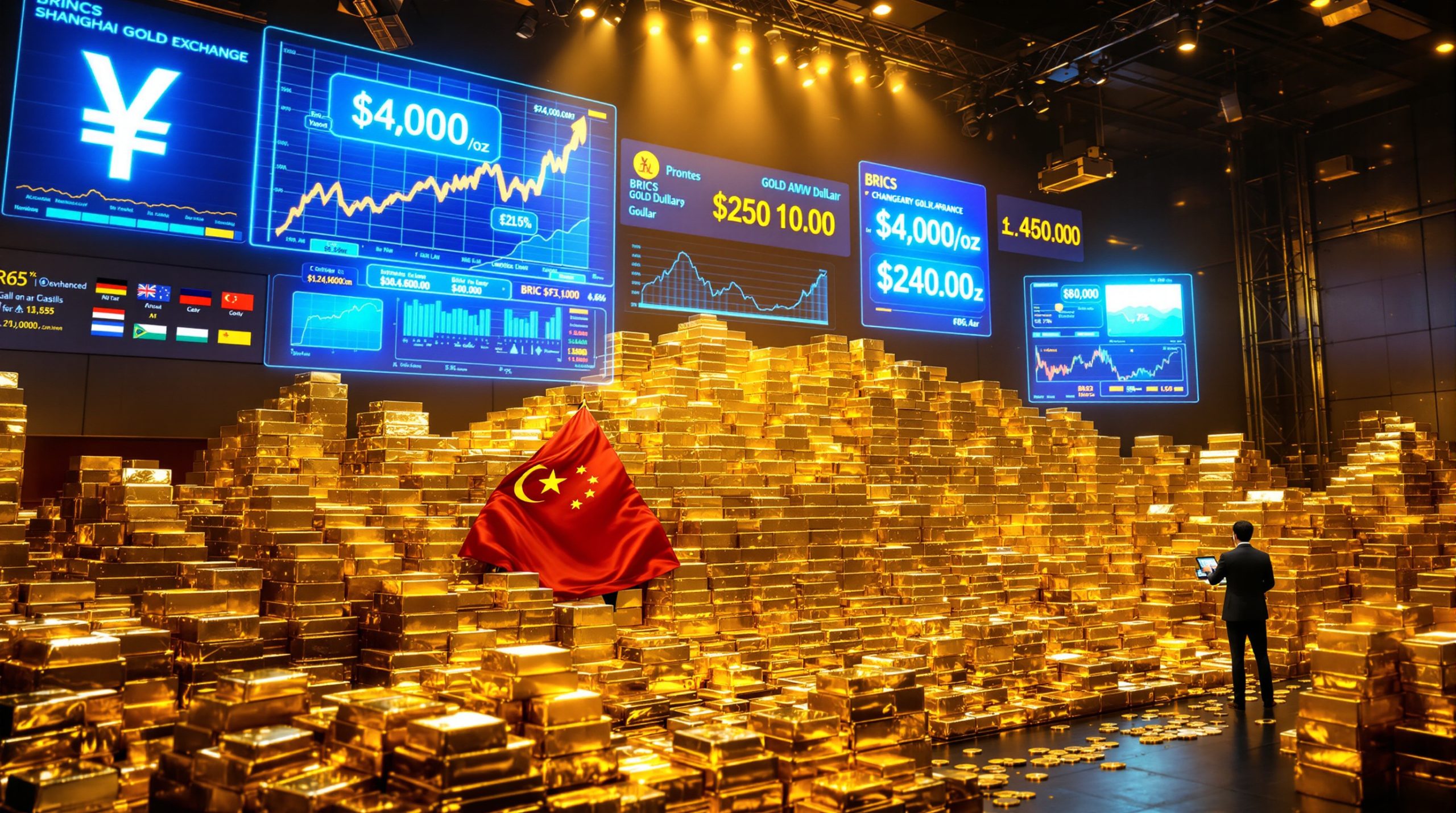What's Causing the Historic Silver Squeeze in London?
The global silver market is witnessing unprecedented turbulence as a massive short squeeze drives prices above $50 per ounce—a level only reached once before in history. This extraordinary market disruption has created a situation where silver traders rush bars to London where premiums are soaring, with some even booking space on transatlantic flights specifically to transport silver.
The Perfect Storm of Market Factors
The current silver market squeeze impact represents a confluence of several critical factors that have aligned to create market chaos:
- Persistent supply deficits as global mine production consistently fails to meet growing demand
- Dramatic reduction in London's available silver inventories, down 33% since mid-2021
- Sudden surge in investment demand driven by widespread currency devaluation concerns
- Unexpected increase in Indian silver purchases, particularly as buyers shifted from Hong Kong sources
- Fears surrounding potential US tariffs on silver imports following a Section 232 investigation
Unlike the infamous 1980 Hunt brothers' attempt to corner the silver market, today's squeeze stems from genuine structural imbalances rather than deliberate market manipulation, though the effects are equally dramatic.
How Severe Is the Current Silver Market Disruption?
The severity of today's market disruption is evident through several unprecedented metrics that show just how extreme conditions have become:
| Market Indicator | Normal Conditions | Current Squeeze |
|---|---|---|
| London-NY Price Differential | 0-10¢ per oz | Up to $3 per oz |
| Bid-Ask Spreads | ~3¢ per oz | Over 20¢ per oz |
| Overnight Borrowing Cost | 1-2% annualized | Over 100% annualized |
| Available "Free Float" Silver | 850M oz (2019 peak) | ~200M oz (75% reduction) |
Record-Breaking Price Movements
The London silver auction—a price-setting event with a 125-year history dating back to 1897—recently traded above $50 for the first time ever. This approaches the all-time high of $52.50 recorded on the Chicago Board of Trade in January 1980 during the Hunt brothers' squeeze.
Market veterans describe the current situation as entirely without precedent. As one fund manager noted, the silver squeeze movement insights reveal conditions never before seen, with virtually no liquidity available for trading.
Why Is London So Critical to the Global Silver Market?
London has served as the heart of precious metals markets for more than a century, with its central importance stemming from several key structural factors:
London's Central Role in Silver Trading
- Functions as the global benchmark price-setting venue through its historic auction system
- Houses significant physical silver inventories in secure vaults scattered around the city
- Provides the essential infrastructure for settlement of international trades
- Serves as the hub for a network of banks trading precious metals
- Facilitates physical metal transfers via secure trucks that shuttle between vaults daily
The London Bullion Market Association (LBMA), representing banks, refiners, and logistics companies involved in the precious metals market, has acknowledged the "tightness in the silver market" and is "actively monitoring the situation" according to official statements.
How Are Traders Responding to the Silver Squeeze?
Faced with extreme market conditions, traders are implementing unconventional strategies to capitalize on unprecedented price differentials:
Extraordinary Transportation Measures
Traders are booking cargo space on transatlantic flights specifically for silver bars—an expensive transportation method typically reserved for more valuable gold. This unusual step highlights the immense profit potential from exploiting the massive premiums in London.
One logistics executive reported receiving increasingly urgent calls from customers seeking to move silver from New York's Comex vaults to London, with estimates suggesting traders are currently trying to relocate between 15-30 million ounces across the Atlantic.
Market Liquidity Challenges
The squeeze has created a situation where:
- Banks are reluctant to quote prices to each other, leading to extremely wide spreads
- Traders short silver are struggling to source physical metal to fulfill obligations
- Anyone needing to roll positions forward faces crippling overnight borrowing costs
- Normal market-making activities have virtually ceased
- Bid-ask spreads have expanded from typical 3¢ per ounce to over 20¢ per ounce
What's Different About This Silver Squeeze Compared to 1980?
While the 1980 silver squeeze and today's market share similarities in price action, key differences exist in their fundamental nature:
| Aspect | 1980 Hunt Brothers Squeeze | 2025 Market Squeeze |
|---|---|---|
| Cause | Deliberate attempt to corner market | Multiple structural supply-demand factors |
| Resolution | Exchange intervention (position limits) | Requires physical metal movement |
| Price Peak | $52.50/oz (Chicago Board of Trade) | Over $50/oz (London) |
| Borrowing Costs | High but contained | Potentially exceeding 1980 levels |
| Global Context | Primarily US-focused | Global supply chain implications |
No Simple Fix This Time
Unlike in 1980, when exchanges imposed rules preventing traders from taking new positions, today's squeeze lacks a straightforward regulatory solution. During the Hunt brothers' episode, first Comex and then the Chicago Board of Trade implemented rules that only allowed position liquidation, effectively breaking the corner.
Today's resolution depends entirely on physical silver becoming available in London—either through ETF investors selling holdings or sufficient quantities being transported from other global locations like New York or China.
How Might the Silver Market Normalize?
Several potential paths to market normalization exist, each with its own timeline and implications:
Potential Resolution Mechanisms
- Physical Metal Movement: Silver flowing from New York, China, and other locations to London via air freight
- Price-Induced Selling: Higher prices encouraging existing holders to liquidate positions
- Reduced Tariff Concerns: Clarification on potential US silver tariffs could ease pressure to keep metal in America
- Indian Demand Moderation: At least one Indian ETF has already halted new investments citing domestic shortages
Market participants note that high prices often solve supply issues in the short term by incentivizing profit-taking and drawing metal out of private storage. As one Morgan Stanley strategist observed: "High prices can often solve these things in the short term."
What Are the Logistical Challenges of Moving Silver?
Despite the clear economic incentive to move silver to London where premiums are highest, significant logistical hurdles exist:
Transportation Complexities
- Silver's lower value-to-weight ratio makes air transport expensive compared to gold
- Concerns about government shutdown slowing customs and border processing
- Stringent security requirements for precious metals shipments
- Limited air cargo capacity for heavy metal shipments
- Potential customs delays creating punishing financial costs given extreme price differentials
Additionally, traders remain hesitant about exporting silver from the US due to ongoing concerns about potential tariffs following a Section 232 investigation into critical minerals, which includes silver. This regulatory uncertainty has contributed to the reluctance to move metal despite economic incentives.
What Does This Mean for Silver Investors and Industrial Users?
The implications of this market disruption extend beyond traders to impact various stakeholders across the silver ecosystem:
Investor Implications
- Physical silver holders benefit from premium pricing opportunities in certain markets
- ETF investors may see fund values disconnect from spot prices as physical bars become scarce
- Retail investors face potential product shortages and high premiums
- Sophisticated traders can exploit regional price differences if they can navigate logistical challenges
Industrial Impact
- Manufacturers using silver (electronics, solar panels) face input cost volatility
- Supply chain planning becomes challenging amid price uncertainty
- Potential acceleration of efforts to reduce silver content in products where possible
- Procurement strategies may shift toward longer-term contracts to ensure supply
How Does the Silver Squeeze Reflect Broader Economic Concerns?
The silver market crash analysis occurs against a backdrop of significant economic uncertainty that has driven investors toward precious metals:
Macroeconomic Context
- Rising government debt levels triggering widespread concerns about currency devaluation
- US government budget standoff and shutdown amplifying economic anxiety
- Potential for protective tariffs affecting metal markets globally
- Growing investor preference for hard assets amid monetary uncertainty
These factors have contributed to a broader precious metals rally, with both gold and silver seeing substantial investment inflows as investors seek portfolio protection against perceived financial risks. The relationship between the two metals, measured by the gold-silver ratio analysis, has shifted dramatically during this squeeze.
FAQs About the Silver Market Squeeze
Is this silver squeeze similar to the GameStop/Reddit trading phenomenon?
No, unlike the GameStop situation which was driven primarily by retail investor coordination, the silver squeeze stems from fundamental supply-demand imbalances and structural market issues that have been building for years.
How long might the silver market disruption last?
Market normalization depends on how quickly physical silver can be transported to London and whether high prices induce sufficient selling. Resolution could take days to weeks depending on these factors and the willingness of holders to part with metal.
Could silver prices go even higher?
While predicting price movements is challenging, the combination of physical shortages, investor demand, and industrial needs creates potential for continued upward pressure until new supply sources become available or demand moderation occurs. Some analysts are already developing 2025 silver pricing strategies based on various potential outcomes.
Are other precious metals experiencing similar squeezes?
While gold has also seen strong price appreciation, it hasn't experienced the same degree of physical market dislocation as silver, partly due to gold's higher value-to-weight ratio making transportation more economical and its larger market capitalization.
How might this affect mining companies?
Silver producers stand to benefit from higher prices, though the extreme volatility creates challenges for hedging and production planning. Companies with significant above-ground inventories may be able to capitalize on premium pricing opportunities in specific markets.
Want to Know When the Next Silver Market Opportunity Emerges?
Don't miss the next major market movement in silver or other commodities—Discovery Alert's proprietary Discovery IQ model provides real-time notifications on significant mineral discoveries and market opportunities across the ASX. Visit our discoveries page to see how early investors in past major discoveries have achieved exceptional returns.




